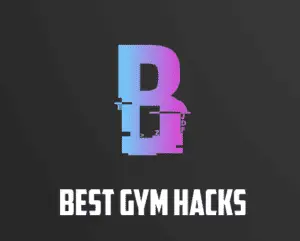These two training methods often get confused. So, what is the difference?
HIIT is an acronym that stands for High Intensity Interval Training. CrossFit is the “sport of fitness” that utilises various sports and exercises, working across 10 different fitness domains with a view to creating a fitter human. CrossFit incorporates interval training into some workouts, and they’re invariably high in intensity. Generally speaking, HIIT is more limited in its programming, whilst CrossFit’s methodology is far more expansive. There are similarities and crossovers, but overall they are different and CrossFit is more comprehensive.

What is HIIT?
HIIT is generally split into 2 forms: Sprint and High Intensity. Sprint is abbreviated to SIT (sprint interval training). High intensity is….you’ve guessed it….HIIT.
Sprint (or SIT) is exactly that – a sprint, followed by rest, followed by sprint etc, for a dedicated number of rounds. This does not necessarily mean sprint running. In fact it can be almost any movement, just carried out at a ‘sprint’ pace.
For example, sprint on the rower or ski erg. Or maybe sprint on the spot. What this always entails is a maximum effort applied by the individual, followed by the set rest period.
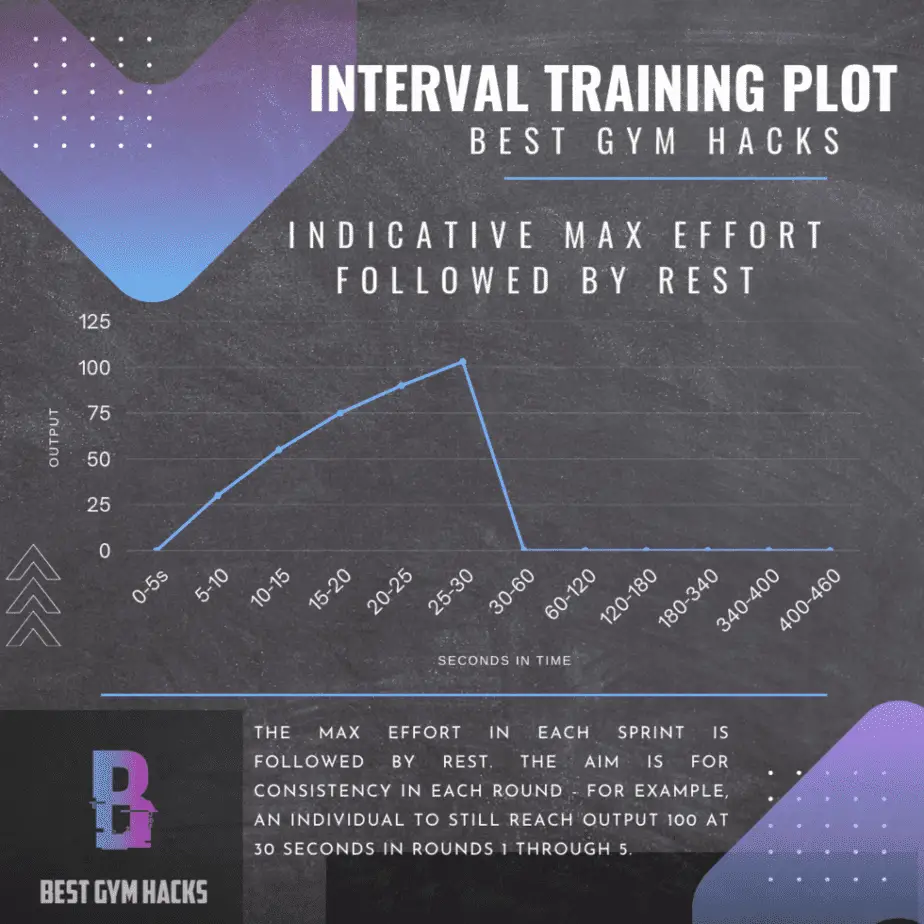
The aim is to maintain speed, pace, reps, or whatever applies within the timed interval, but consistency is key.
SIT is generally more aggressive in nature than HIIT, and not conducive to those with underlying health conditions such as cardiovascular problems.
Work periods normally range from 10-30 seconds. The reason for this is so the individual can go at maximum effort until they can no longer sustain the effort exerted.
Anything longer than 30 seconds results in a rapid drop off in output. The graph below indicates a decline in output after 30 seconds. This is contrary to the aim of sprint intervals (SIT) and is characterised by a plateauing effect.

High intensity
High intensity (HI) intervals are normally in the realms of 30 seconds to 2 minutes, working at 80-100% of your maximum heart rate (MHR). This is different for us all, but a good rule of thumb is to minus your age from the number 220BPM.
So, for someone who is 50 years old, their MHR at 100% would be approximately 170BPM.
Logging stats and scores
Keeping track of your personal fitness metrics has exploded in popularity of late. There are apps and devices galore.
Wearable tech such as FitBits, Garmin or Apple Watches are great at tracking your BPM, as well as a tonne of other functions.
This Garmin is well known to be one of the best out there without breaking the bank. Read the 23,000+ reviews to get a sense of what it does and how it can help you.


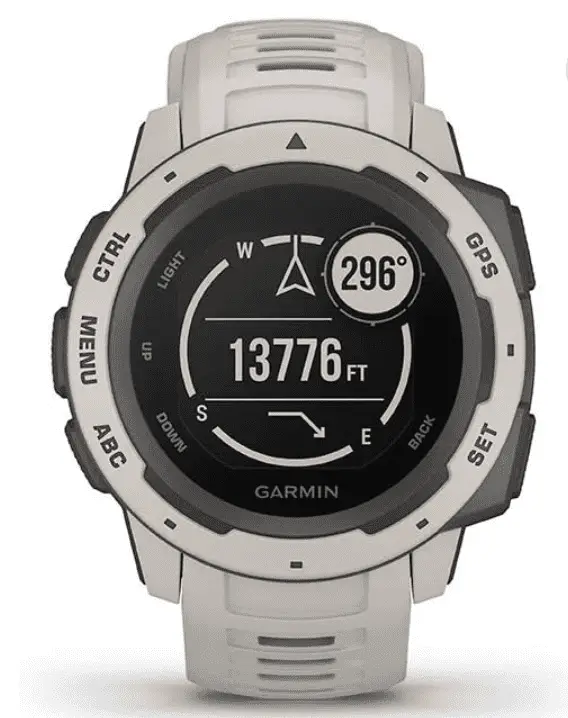
Heart rate monitoring (HRM)
By monitoring your heart rate during exercise and when resting you can keep an eye on your fitness, your peak and resting levels, spikes, and other things like recovery.
This is useful in HIIT or CrossFit and many people choose to immerse themselves in these stats – if that’s what floats your boat.
So What Is CrossFit and How is It Different to HIIT?
CrossFit draws numerous sports, exercises and movements, creating workouts by moulding them into a succinct and digestible format, pre-programmed for classes. It operates using a vast array of movements, all of which are scalable, to allow any member to take part in what’s known as the WOD, or Workout Of the Day.
You can read more on this topic in this Best Gym Hacks article here.
As you become fitter (in a cardiovascular / respiritory sense), that target number should increase, as your capacity to work at a sustained rate improves by an increase in cardiovascular fitness, also known as V02 Max.
BGH
Difference between CrossFit and HIIT
It’s different to HIIT in the respect it’s not apples for apples.
HIIT concentrates on intervals – as the name suggests. CrossFit actually sometimes incorporates intervals into the workout (WOD), but is far broader in its overall workout intention, lengths and skill levels.
An example of something ‘HIIT-esque’ in a CrossFit class might be:
5 rounds for quality – 1 minute on each station
- Wall Balls
- Assault Bike Calories
- Pull Ups
- Dumbbell Snatch
- Rest
You would do each of the 4 stations (including rest) 5 times. The aim is that your Wall Balls for example might be 20 in round 1, so it should be around 20 in round 5 too, plus all those in between. The key is to know your pace and attempt to stick with it.
As you become fitter (in a cardiovascular / respiritory sense), that target number should increase, as your capacity to work at a sustained rate improves by an increase in cardiovascular fitness, also known as V02 Max.
HIIT classes would incorporate something of this structure, but often deploys less technical movements, also utilising bodyweight movements more prominently.
Here’s a table of differences for easy analysis of the line-by-line differences of HIIT vs CrossFit.
| CROSSFIT CLASS | HIIIT CLASS |
| 1 hour, encompassing strength/skill, then workout | Less than 1 hour with only workout |
| Large repotoire of movements | Smaller number of movements |
| Sometimes utilises intervals | Only uses intervals |
| More complex and lots to learn | Simpler in nature and less to learn |
| Intensity levels vary | Intensity intentionally high generally |
Which is Easier – CrossFit or HIIT?
As the table demonstrates, there is so much more to learn in CrossFit.
An example is an Olympic lift called the Snatch. This takes many athletes decades to perfect. It is extremely technical and therefore difficult to learn. It can sometimes be used in intervals (but not often), in something such as barbell cycling.
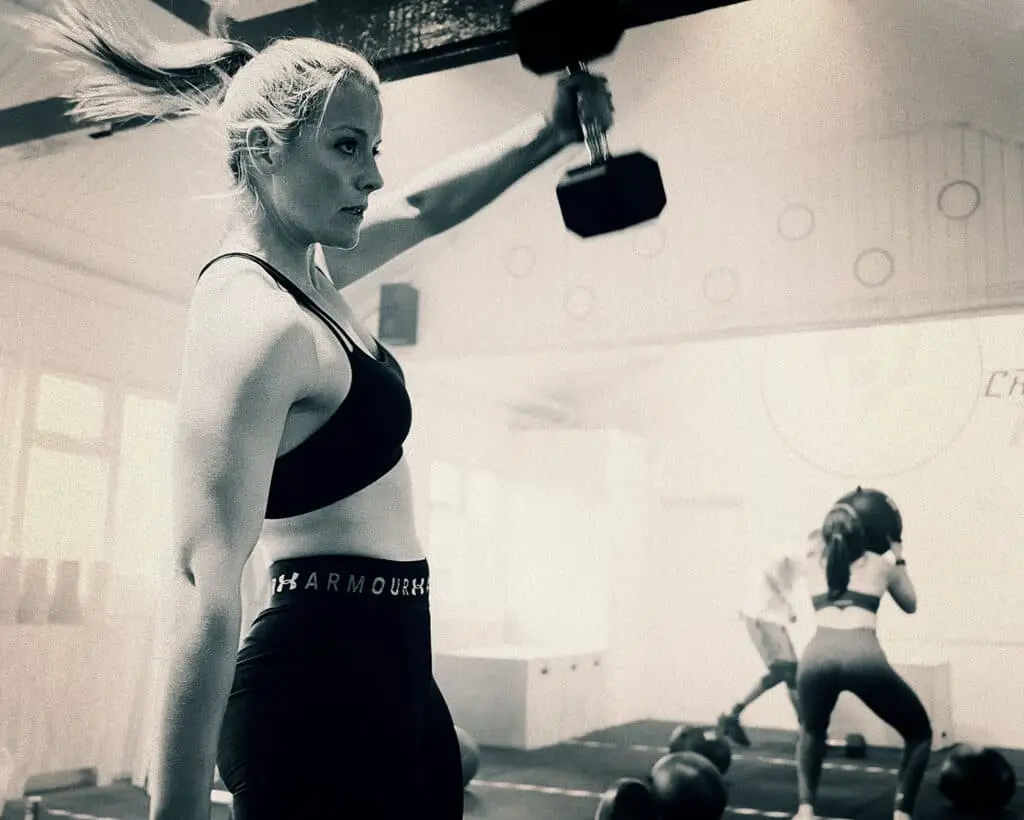
This just means unbroken, or linked repetitions of Snatches, (without letting go of the bar), and would be light in weight to allow for continual and sustained repetitions.
Another example of something you might do in a CrossFit class but not HIIT would be a Muscle Up. This is a technical gymnastic movement, which is on the advanced scale of CrossFit skill sets.
You start from the dead hang, oftentimes with a “false grip” (hands inverted, with opposing thumbs wrapped to finish the grip).
These two kind of movements (Snatch and Muscle Up) are not typical in a HIIT class, so just taking those two movements alone, it is safe to say CrossFit is harder to learn and execute.
Skill level
So the level of skill required to do CrossFit is much higher, just by the nature of what you’ll do in every class. It is constantly varied too, and thus much to learn all the time.
The sheer quantity to learn is sometimes a turn-off, or a turn-on, for people looking at starting. Some people love to learn, so this suits them. For others, they’d rather keep it quick and simple, therefore HIIT classes better suits them.
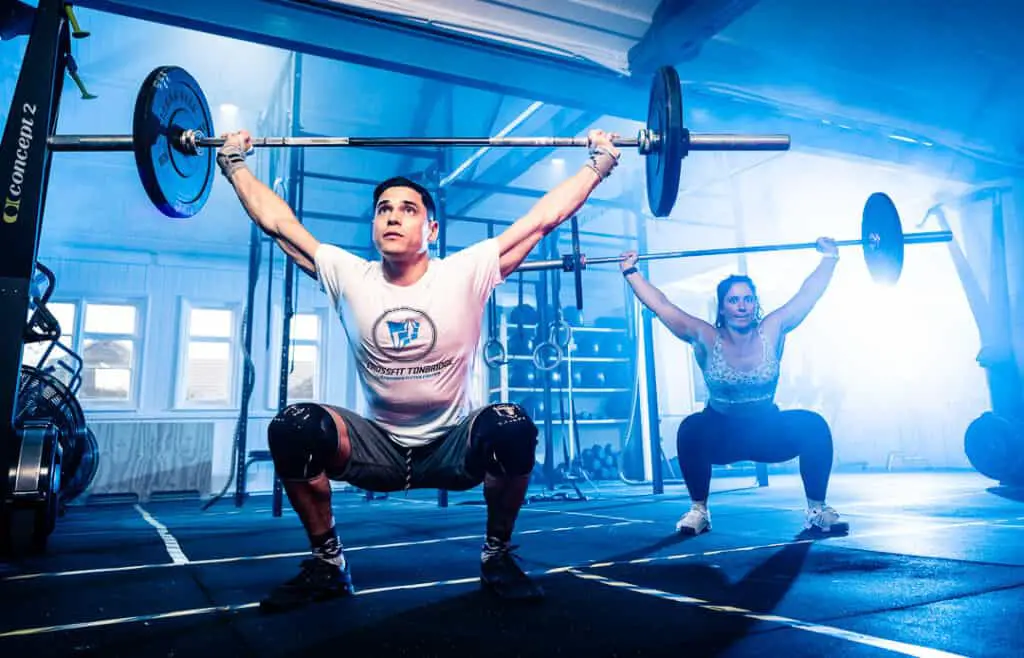
What Burns More Calories HIIT or CrossFit?
A HIIT class is generally shorter than 1 hour. CrossFit Classes are 1 hour as standard and has more packed in, sometimes including something HIIT based.
Therefore it’s logical to assume that a CrossFit class will have a higher calorie burn than a HIIT class.
We have some data to back that up.
With a HIIT class generally being shorter than 1 hour- utilising lighter weights and less technical movements – this would mean it would overall burn fewer calories than a typical CrossFit class.
Check out this Best Gym Hacks article where we analyse what activity burns the most calories.

From those studies, we know that CrossFit falls around the 570 – 600 calories burned per hour (CBPH) for a healthy 70kg individual.
With a HIIT class generally being shorter than 1 hour – utilising lighter weights and less technical movements – this would mean it would overall burn fewer calories than a typical CrossFit class.
Class frequency
Also noted in the linked Best Gym Hacks article above is the high retention rate of CrossFit, and commitment attendance generally being higher than a normal gym due to the social aspect it also offers.
So the combination of a respectable calorie-burn rate, plus people opting to attend 3x per week minimum, (with many doing more than that, around 4-5+ per week) the overall weekly calorie burn rate amounts to quite a lot more, compared with other activities.
What Gets You Fitter – CrossFit Or HIIT?
Before answering that, the definition of fitness according to Medical News Today is: “one’s ability to execute daily activities with optimal performance, endurance, and strength with the management of disease, fatigue, and stress and reduced sedentary behavior.

CrossFit is known to some to have a somewhat contrarian view of what fitness actually is, but that’s the basis on which is founded and has thrived.
It appears to have proven its concept many times over since its inception, however, with elite CrossFit athletes even competing at the Commonwealth Games and Olympics in Weightlifting, or Rowing marathons at the CrossFit Games, even doing open water swims and lifting extremely heavy weights in close succession.
So going by the dictionary, Medical News Today or CrossFit LLC’s view on what fitness actually is, CrossFit would arguably make you into a fitter person than HIIT.
Moreover, CrossFit’s philosophy is not only that of being fit in the physical sense as we think of it, but also the health side, outside of the gym. This CrossFit Health agenda has been pushed by and large from Greg Glassman before his stepping down, and continued on by the brand today.
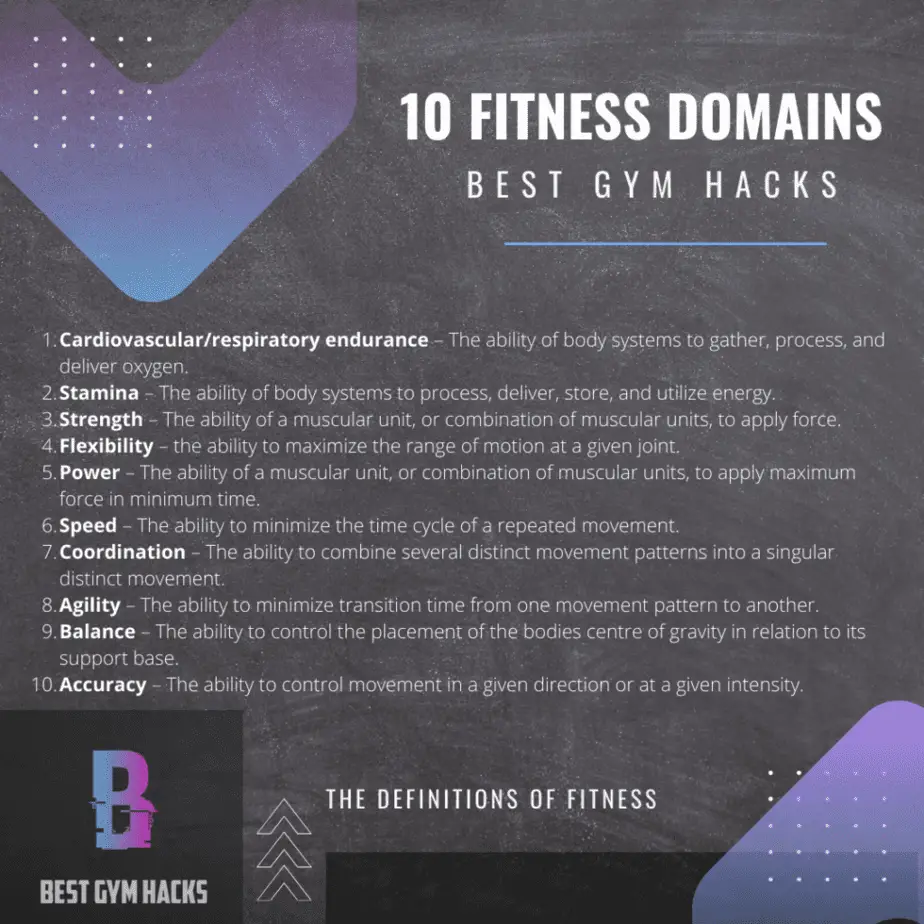
They are different and not really comparables
HIIT is not a philosophy as such, whereas the underpinning of CrossFit is.
It draws upon using intervals and high intensity that theoritcially gets your cardiovascular fitness better over time. But it doesn’t hone in on other aspects of the human physicalities that can be bettered, to make you overall better in life, as CrossFit aims to do.
Some even say the meta-physical wellbeing of CrossFitter is also improved, but we won’t get into that….
So in conclusion, it is an acceptable answer to say that CrossFit does get you fitter than HIIT.
To finish, here are some pearls of wisdom by the founder of CrossFit Greg Glassman: World class fitness in 100 words.
Love him or loathe him, the man created a highly disruptive movement in the fitness scene that is impossible to ignore.
